Bob Olthoff and his MGA Twin Cam Revisited: Part 4
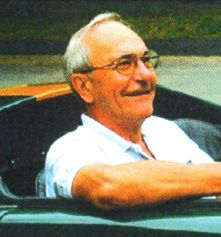
 I have set out Bob Olthoff’s story at some length in three articles in the February, March and April 2015 editions of Safety Fast!. This included a possibly colourful history with the 1762cc Twin Cam engine.
I have set out Bob Olthoff’s story at some length in three articles in the February, March and April 2015 editions of Safety Fast!. This included a possibly colourful history with the 1762cc Twin Cam engine.
This fourth and final article is about the many modifications Bob made to turn his car into a road going racing car. Racing modifications racing are inevitably ongoing and I have taken the car as it raced at the Nurburgring in 1962 as the applicable specification.
To read Parts 1 to 3 of this article, please click here.
Bob competed with some success in his MGA Twin Cam, YDH5/929, registered in the UK as YRX 310, in southern Africa in 1959 and early 1960 and in the UK, Eire and Germany in 1960 to 1962. He worked in the Show Shop at Abingdon and was effectively an MG works privateer. He was also the reserve driver and mechanic for the MG entry in the 1961 Sebring race and drove in the 1962 Sebring race, as well as being Ted Lund’s co-driver for the 1961 Le Mans entry of the special bodied 1762cc Twin Cam, SRX 210.
Bob entered the Autosport Championship in 1961 and finished third overall. He competed in his car in the 1961 Nurburgring 1,000km race with John Whitmore and finished a creditable seventh in class behind the Porsches, and also competed in the 1962 Nurburgring 1,000km at 1762cc, again with John Whitmore. This is the only example of the 1762cc Twin Cam engine being run in an FIA International Race in, essentially, a standard profiled bodied MGA.

In Dublin in 1961, again using a 1762cc engine, Bob claimed the fastest recorded speed of a Twin Cam which has been variously reported, essentially by Bob, at somewhere between 136mph and 143mph.
That Bob was a talented driver is not in doubt. That Bob’s car was competitive when other MGAs, Twin Cams or otherwise, generally were not, is also the case.

In 2014 I built a replica, registered YRX 800, of Bob’s car and obtained an FIA Historical Technical Passport (HTP) for it as it raced in the 1961 Nurburgring 1,000km, entered at 1588cc, and in the 1962 Nurburgring 1000km at 1762cc. I did this with the invaluable assistance of Michael Eaton, the then owner of YRX 310. I subsequently bought the original car from him and brought it back to the UK earlier this year. To make the replica I had to have a car to start with, and luckily I had a Twin Cam with an 1800cc MGB engine as the basis for the replica.
Building a replica car from scratch to a specification based solely on current pictures, descriptions and measurements, as well as period articles, concentrates the mind on the minutiae. The subsequent and unexpected opportunity to compare the two cars in the metal made me realise how right I had made the replica and just how far YRX 310 itself had currently been removed from the state in which it raced in 1961/1962, principally, I believe, by the ‘restoration’ carried out by the late Simon Robinson in 1984. I hope to rectify this over the winter and bring the car back to the 1962 specification. I also recognised how poorly modifications to other well know cars such as 1 and 2 MTW and SRX 210 had been documented in period, perhaps for obvious reasons. Bob probably gives the best contemporary description there is of in-period modifications, save, of course, for his 1762cc engine!
This article sets out the modifications that Bob made to his car in period, with photos from both YRX 310 and YRX 800, and some details where relevant. Anyone wishing to copy any of those modifications and who needs further details is welcome to contact me.
Bob’s Twin Cam was originally a standard white CKD (Completely Knocked Down) 1500 bodied car, with the only accessory being an oil cooler, assembled in South Africa and delivered new to Bob in January 1959. Bob raced it from the outset, starting with the 6 hour race in the MG Team fielded by the local distributor at the Roy Hesketh circuit in March 1959. Luckily I have Michael Compton’s extensive notes as to the preparation of the MG Team cars for that event as well as the race report. The notes show Bob had a modified exhaust essentially from the outset. Bob brought the car to the UK in the spring of 1960, by which time it had become white with a maroon flash down the sides.
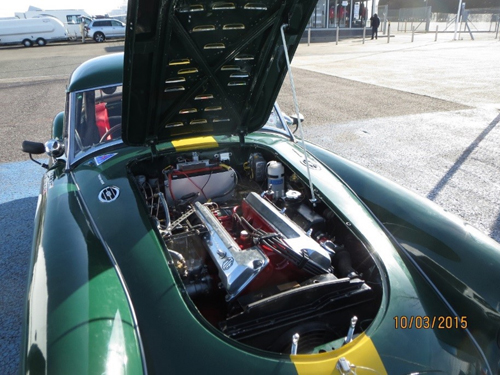
In May 1961 Bob’s car emerged from the Competitions Department at Abingdon in green and gold Springbok colours, highly modified and fettled for the 1961 Nurburging 1,000km race, complete with competition numbers. However, in essence, the car was still recognisably a standard bodied roadster.
Bob wrote a number of articles about the car in March 1962 and these, along with a letter he wrote in 1984, have proved invaluable in determining the period specification.
It is clear that at all times Bob’s Twin Cam was a road going car in everyday use which was used for racing at the weekends; this even applied at the Nurburgring in 1962, in which the engine ended with a hole in the side of the block, as Bob had apparently intended to go touring Europe after the 1962 race.
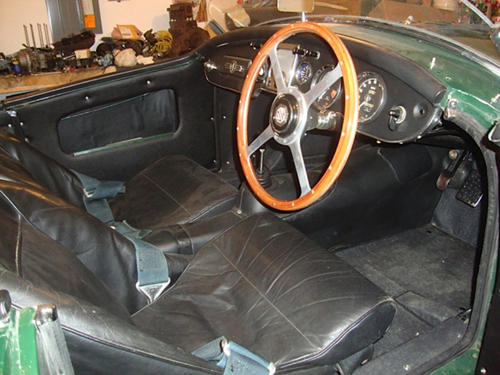
Roland Greenwood bought the car off Bob in 1963 and his recollections of its specification, his photographs and the sale particulars sheet he created when he sold the car in 1965 have also proved extremely helpful. He also recalls a number of meetings with Bob to collect parts from Bob’s race trailer at Willments, to whom Bob was contracted to race in 1963, and the anecdotes Bob told him. He was able to tell us, for example, that the car could run with a jockey wheel rather than a dynamo when racing (which would not appear to be within the regulations) and that the 42 DCOE Weber carburettors had supports on their underside from the block.
Exactly when Bob made which modifications to the car is not always clear so I do not list the specification changes chronologically, rather doing so by location and systems.
The specification list for the car as it ran in 1962 contains over 60 modifications and that does not include specific internal engine modifications other than the work on the head.
The form many of those modifications take are self evident but some are worth an individual mention.
a) The removable panels in the front wheel arches, which I believe Bob removed to race, take away the challenge of engine access on a Twin Cam. A worthwhile, relatively easy and practical modification.
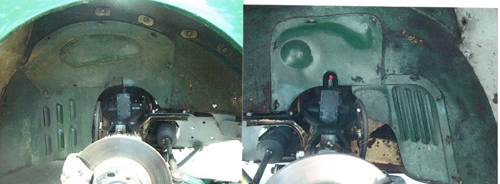
b) The dual circuit brakes Bob used on YRX 310 were activated by a single bodied dual master cylinder in the style of the standard MGA combined clutch and brake master cylinder but operating the two brake circuits. On Bob’s car this was originally a prototype unit discarded by a later owner, and is now a standard MGA dual master cylinder operating the two separate front and rear circuits. The brake lights on YRX 310 operate on one hydraulic circuit only, which is not ideal.
c) Bob’s bonnet was functionally pointless as far as I can determine. It had a complex pattern of louvres matching the internal ribbing and a bulge at the front to clear the cam covers at the front of the engine. It was fabricated from an early 1500 bodied pre Twin Cam bonnet. Bob’s car would have come with a Twin Cam bonnet originally which had added curvature and fitted with no bulges. As a consequence Bob’s modified bonnet was a terrible fit as can be seen from period photographs, and as is apparent on the replica with a bonnet I had fabricated identically. Interestingly the bonnet on the car has now been made to fit perfectly, an example of restoration matching expectation rather than period reality. Quite why and when Bob fitted this bonnet is not known; although photographs from March 1960 in South Africa show the louvres, it is unclear whether there is a bulge present or not.
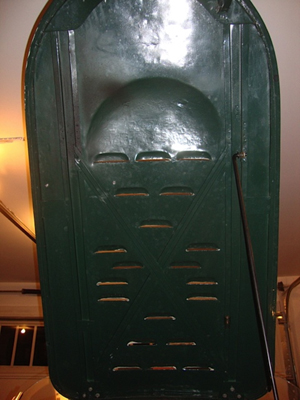
e) Bob designed and cast his own Weber manifolds in South Africa. The original moulds for these have survived and thanks to Bo Giersing’s generosity I now have them. Manifolds have been cast from them in South Africa recently and were fitted to the replica. Peter Wood has had further copies cast. These manifolds do not provide a rear mounting point for the dynamo, unlike modern Weber manifolds, and the dynamo is mounted on a point welded on to the block.

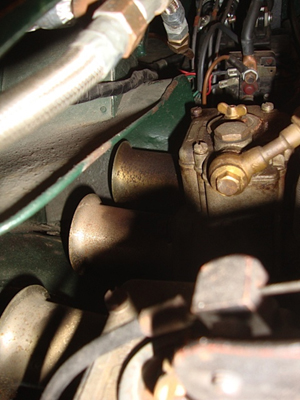
g) Bob’s modified dipstick is another useful idea. As any Twin Cam owner will tell you, putting the dipstick back can be a frustrating process. Bob connected a longer tube to the standard dipstick tube so the ‘aiming point’ so to speak was at the level of the cam covers and not deep down by the exhaust manifold.
h) Bob could run with two alternative silencer configurations which conceptually originated from his very first race in South Africa. The more standard one came out the back, but the racing one exited just in front of the left rear wheel. Bob believed that these alternatives suited different types of track. Roland Greenwood tested both and found the results identical. Roland describes the racing one as being very complex and it certainly had a fish tail type outlet.
i) The suitcase cut-out behind the seats was to comply with the FIA GTS category regulations which required the car to be able to carry a specific sized suitcase.
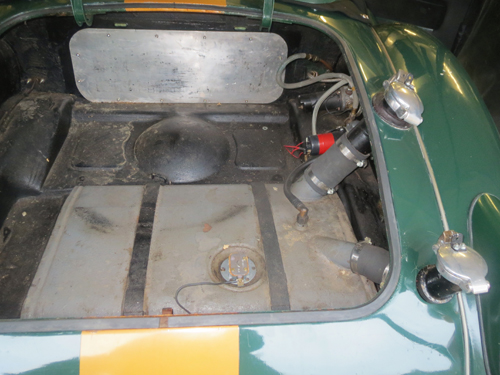
j) Bob’s arrangement for lowering the rear springs was conveniently sketched out by him on a piece of Reed’s Hotel paper whilst he was at Sebring.
k) In order to lighten the car, Bob fitted fibreglass wings which he is said to have made himself, using steel wings as the moulds. These were apparently very roughly finished both in period and when Roland acquired the car. One of the first things Roland did in October 1963 was take the car to Specialised Mouldings Limited in London SE19 to ‘Repair and Fill Front and Rear Wings’ all for £23, a not inconsiderable sum in those days. The front valance was modified to take two Lucas 576 lights and would have originally been aluminium I believe. However, it was damaged at Dunboyne in 1961 and the current valance is steel.
l) Further lightening was achieved by fitting a number of aluminium parts including splash plates, battery cover and gearbox tunnel.
m) The gearbox tunnel was mounted on top of the floor boards to facilitate speed of engine removal and the toe board was split so as to avoid the necessity of removing the steering column.
n) Bob had large feet, hence the enlarged brake pedal.
The car had, but no longer has, a column steering lock when Roland acquired it in 1963. This was a period optional extra at the end of the MGA’s production in certain overseas markets. The car did not have one when it left the Competitions Department in 1961. The steering lock was a Nieman’s type, also fitted to early MGBs, and I have the original key. It operated the ignition and was presumably fitted for the 1962 Nurburgring trip because steering locks were mandatory for all cars in Germany from July of that year and, according to Roland, Bob said he was going touring after the race, which fitted in with it being a road going racing car.
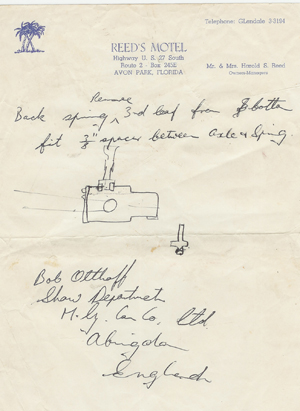
Appendix K would have also required a foam filled fuel tank. Bob had a 17 gallon tank in period. This was out of a Morris commercial vehicle with the same footprint as the standard tank but more depth.
Appendix K would also have required a kill switch, an oil catch tank and five point belts amongst other lesser items. Bob raced in period with simply a lap belt.
So how did these many modifications make Bob’s car so competitive? Leaving aside Bob’s undoubted talent, there are three factors which may well be relevant:
a) Power. Bob’s car probably had a 1762cc engine throughout the 1961 season and certainly had it at the Nurburgring in 1962. He actually enters, but later denies he had, the 1762cc engine in Dublin and Dunboyne in 1961. Capacity increase alone would not have achieved that much. He had 42 DCOE carburettors mounted on his own design inlet manifolds, he had a gas flowed head of his own design and he ran without a fan and without a dynamo on occasion. He also had his modified exhaust system.
b) Weight. The front wheel arch modifications not only eased access but, when removed for racing, reduced weight. The fibreglass wings and aluminium panels went further, as did removing the dynamo and replacing the standard batteries with a lightweight battery under the bonnet. The car was, of course, de-bumpered.
c) Grip. There were stiffer front springs, and the front Armstrong shock absorbers had modified valves and bigger reservoirs. There were adjustable shock absorbers at the rear. The lowered suspension at the rear with modified rear springs would also have been a factor.
A combination of the above certainly led to an impressive end result, but to what extent some of the modifications were, in the event, simply cosmetic or actually detracted from performance is impossible to determine. Perhaps the biggest factor was that Bob was a talented driver!
Postscript: Peter Wood has just given me a copy of a handwritten note of the specification of Bob’s car, which confirms the above and adds only that Bob used Ferodo DS11 brake pads. However on the reverse he has recorded some performance figures. 0-60 in 8.1 seconds with 4.1:1 axle and SP 165×15 tyres; 0-80 in 14.5 seconds; standing quarter mile 16.2 seconds; bottom gear limit 47mph, second 72mph, third 85mph, top 112.5mph at 6,500 revs. Short circuit Silverstone 1min 13secs.
YDH5/929, YRX 310 Modifications as at ADAC Nurburgring 1000Km Race 1962
- Debumpered at front
- Underswung roll bar fitted on 1500 front chassis extension
- Front grille removed
- Blanking plate at top of grille aperture
- Modified and shallower aluminium front valance with two Lucas 576 lights
- Oil cooler offset to left
- Air intake in right front shroud ducted to carburettors
- Clip to secure front of bonnet
- MG badge on front valance
- Competition front springs
- Competition front shock absorber valves
- Enlarged front shock absorber reservoirs
- Two (L) and three (R) removable panels secured by Dzus clips in each front wing arch to improve engine access
- Austin Healey 3000 headlight surrounds
- Lucas P700 headlights
- Front side lights as per MGA 1600
- Fibreglass front wings
- Aluminium front splash panels
- Dual Circuit Brakes
- 1600 wiring loom
- Lightweight battery mounted under bonnet
- Lucas C40R dynamo
- Lucas RB310 control box
- Solenoid starter
- No engine fan
- Split toe board
- Olthoff cast inlet manifolds
- 42DCOE Weber carburettors
- Competitions Department Weber throttle linkage
- Carburettor supports from block
- Elongated Weber air intakes
- Modified air ducting from right shroud inlet
- Modified porting and valves in head
- Additional cooling from head
- 1762cc capacity
- Dual block breathers
- Enlarged brake pedal
- Modified dipstick
- Tubular exhaust headers
- Silencer with side exit in front of left rear wheel
- Louvered and bulged 1500 (non Twin Cam) bonnet raised at rear
- Bug deflector
- Two speed windscreen wiper
- Perspex 12” aeroscreen (as an alternative to aluminium hardtop with sun visors)
- Headlamp flasher
- Ammeter
- 18 gallon fuel gauge
- Starter button with electrically operated solenoid
- 4.55 differential and speedometer
- Limited slip differential
- Close ratio gearbox
- Wooden Derrington steering wheel
- Aluminium gearbox tunnel and gear lever cover mounted on top of floorboards
- Microcell seats
- Aluminium battery cover
- Suitcase cut out behind seats
- Twin fuel lines running through passenger compartment
- Twin fuel pumps
- 17 gallon tank
- Twin fuel fillers
- Lowered rear springs with third leaf removed
- Adjustable rear shock absorbers
- Debumpered at rear
- No rear number plate mounting
- Rear number plate light on body
- Rear fibreglass wings
- Aluminium rear splash panels
- 1600 rear lights
- Steering lock
In addition, the replica car YRX 800 has the following non period modifications:
- Electric fan with thermostatic control and manual override
- Roll Over Protection Cage
- Electronic kill switch
- Brake failure indicator
- Five point harness
- Oil catch tank
- Extinguisher system
- Foam filled 17 gallon tank
- Indicator buzzer
- Hazard warning lights
- Rain light
- Mechanical brake light switch
- Oil pressure warning light
- Bonnet clips
- Rear brake bias valve
- Lower twin fuel filler a dummy
- Tow points front and rear
- Competition clutch
- Reverse gear lockout
- Fixed hardtop mounting points
- Oil temperature gauge
- Fuel pressure gauge
- Lambda gauge
NAMGAR would like to thank Andy Knott, Editor Safety Fast!, and author, Edward Vandyk, for their permission to reproduce this article.


Comment by: Chet Mackentire
Hello,
I owned Olthoff’s YRX 310 MGA TC in the 1990’s when my long time friend (of Austin Healy fame) Phil Coombs bought it in England and imported to the states – for me.
My first car at 16 (1965) living in Pennsylvania was a MGA Twin Cam and Phil owning a Healy at the time.
More later if you’re interested.
Regards,
Chet/Chester
That Phil Coombs was quite a dashing dude in his Austin Healey, eh Chet? ( aka The Twin Cam King!)